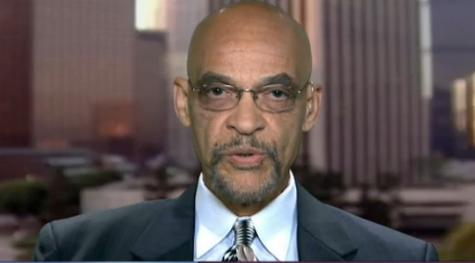Earl Ofari Hutchinson
Hopefully, the murder of 15-year old Hannah Bell marks a major turning point in the titanic battle to make Black lives, especially Black female lives, as valued as white lives. Bell’s murder brought forth a torrent of press conferences, complete with streets being blocked off, a massive candlelight, a walk against murder violence, an influx of donations for the family, a big reward offered for the killer(s) capture, and solemn assurances from police officials that no stone will be left unturned to nab the killer(s). This reaction was heartfelt and much needed for several reasons. And all of the reasons strike to the heart of the age-old complaint that the murder of young Blacks is routinely met with a mix of indifference, complacency, and a blame the victim media and public mindset. That complaint is hardly unfounded.
There’s still the hideous memory of the mayhem the Grim Sleeper serial murderer wreaked for decades in South Los Angeles. Before his capture, conviction and death sentence, Lonnie David Franklin, Jr.’s heinous victim scorecard read nearly a dozen women he was convicted of killing. Almost certainly there were others in his hideous count that were unknown. There were lots of theories from police, prosecutors, and media observers as to why he got away with murder for so long. However, the one deeply troubling fact was that his targets were mostly poor women. Some were prostitutes, others drug addicted or with petty criminal records. But all, or nearly all were black.
Fast forward, a decade later, there was a similar furor in Washington D.C. in 2017 when police officials were roundly denounced for allegedly fragging their feet in the investigation of the disappearance of nearly a dozen Black girls. The Congressional Black Caucus even jumped in the fray and demanded more vigorous action by police. Again, the standard charge was that, police foot-drag in such cases precisely because the victims are poor Black girls and women. The perceived dual standard in crime and punishment when the victim is a Black female versus the response when a white female is killed or comes up missing has been virtually institutionalized in the “damsel in distress” quip, and parody. Then the case instantly becomes a media and public cause celebre.
It’s not just the race of the victims that has stirred rage. It’s also the race of the killers. In Los Angeles and the other big cities, the killers have been Black. That’s almost certainly the case in the murder of Bell. Yet, Black on Black homicides always fuels suspicion that police take these crimes less seriously.
Police and prosecutors bristle at the charge that they are less diligent when it comes to nailing killers who kill Blacks than whites. In Los Angeles, police officials in the Grim Sleeper case pleaded that despite being under staffed, lacked the resources, and technology to make a swift arrest when the killings began, they still did due diligence in trying to apprehend the killer. Yet, it’s also true that the killer’s victims in inner city neighborhoods do not reflexively ignite police and public outrage.
The terrible truth is that the great threat of murder and criminal violence to many black women is horrific. Homicide ranks as a major cause of death for young Black females. A Black woman is more likely to be raped and assaulted than a white woman. While the media at times magnifies and sensationalizes crimes by Black men against white women, it ignores or downplays crimes against Black women.
There’s also the notion that these women are dangerous women. The police slayings of Black women in some cities, the upswing in violent crimes by women, and Hollywood films that show Black women as swaggering, trash talking, gun-toting, and vengeful stoke public jitters about these women. One in four women is now imprisoned for violent crimes, and half of them are Black.
According to annual reports from the Sentencing Project on crime and imprisonment in America, for the first time in American history black women in some states are imprisoned at nearly the same rate as white men. They are being jailed at even younger ages than ever. American Bar Association studies have found that teen girls account for more than one-quarter of the juvenile arrests, are committing more violent crimes, and are slapped back into detention centers after release faster than boys. Black girls were arrested and jailed in far greater numbers than white girls.
The crusade to catch and put the killer of Bell behind bars certainly has made the public much more aware of the peril that many Black women face on the streets. Part of that peril is the possibility of them being the targeted victim of a killer, or simply an innocent by-stander whose life is deemed expendable.
Unfortunately, it takes an ugly and embarrassing media spotlight on a gruesome killing such as that of Bell to heighten police and public awareness of the dire menace murder violence poses to Black females. Hopefully, the outpouring of sympathy support and determination to catch Bell’s killers is a turning point.
Earl Ofari Hutchinson is an author and political analyst. His forthcoming book is, Why Black Lives Do Matter (Middle Passage Press). He is a weekly co-host of the Al Sharpton Show on Radio One. He is the host of the weekly Hutchinson Report on KPFK 90.7 FM Los Angeles and the Pacifica Network.

